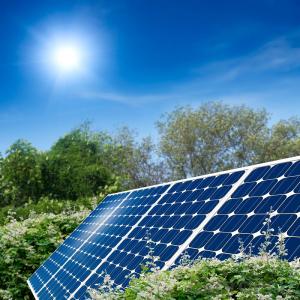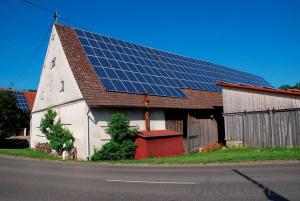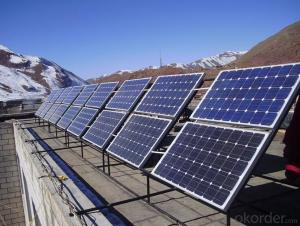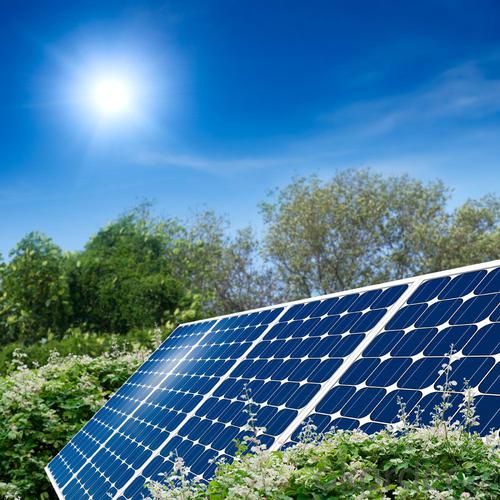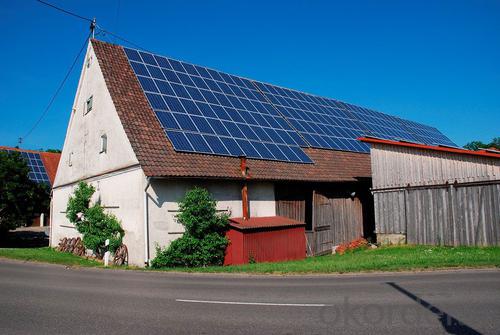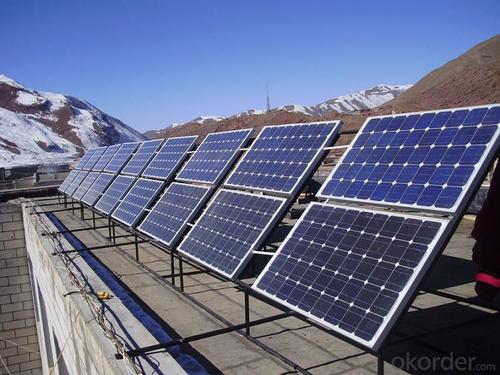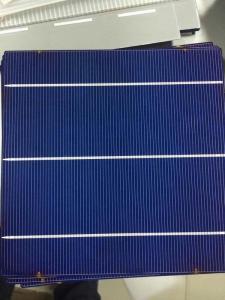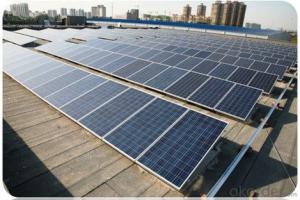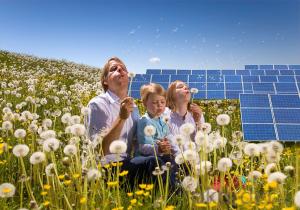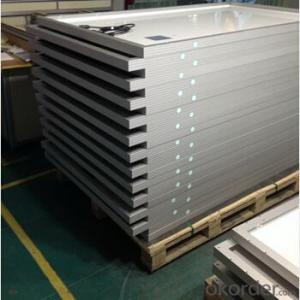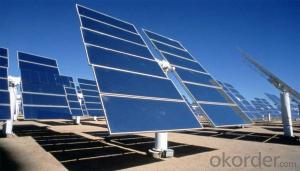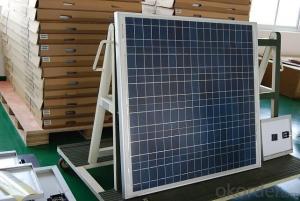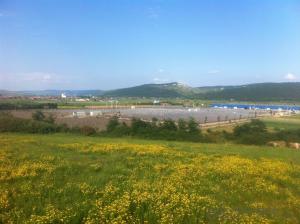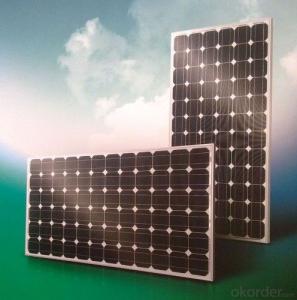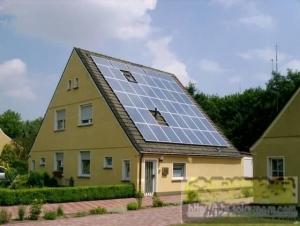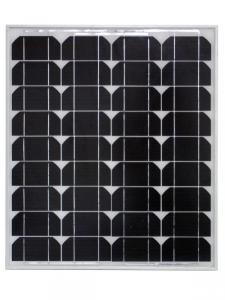CNBM Solar Monocrystalline 156 Series (50W) Solar Panels for Schools
- Loading Port:
- China main port
- Payment Terms:
- TT OR LC
- Min Order Qty:
- 100000 watt
- Supply Capability:
- 10000000 watt/month
OKorder Service Pledge
OKorder Financial Service
You Might Also Like
About us
CNBM International Corp, established in 2004, is the business entity for trade and logistic of CNBM Group.With the advantages in Cement, Composite Materials, New Building Materials and Engineering, CNBM mainly concentrate on coal, steel and construction equipments and give priority to solar and wind energy development.CNBM International is highly recognized by its business partners and clients all over the world and has established good business relationship with the customers in over 120 countries and regions all over the world.
FAQ:
Q1: Why buy Materials & Equipment from OKorder.com?
A: All products offered byOKorder.com are carefully selected from China's most reliable manufacturing enterprises. Through its ISO certifications, OKorder.com adheres to the highest standards and a commitment to supply chain safety and customer satisfaction.
Q2: What is a solar PV module?
A: A solar PV module consists of many solar cells that are connected together (typically in series) and packaged in a frame (typically made of aluminum).
Q3: What are the advantages and disadvantages of monocrystalline solar PV modules?
A: Monocrystalline solar PV modules are the most efficient type of solar PV modules, with the exception of CdTe thin film solar PV modules. As a result, monocrystalline solar PV modules are more expensive when compared to almost all other types of solar PV modules.
Q4: What is the typical service life of a solar PV module?
A: The typical life of a PV module is 25 years. However, superior quality PV modules boast service lives up to 35-40 years (electrical generating capacity is often reduced, however by that point).
Q5: What certifications do you have?
A: We are specialized in the photovoltaic field, with a focus on solar cells, modules and photovoltaic power generation systems. We employ advanced monocrystalline and polycrystalline silicon solar cell manufacturing equipment, producing highly efficient and reliable products sold in Europe, the Americas and Australia. Our company has passed ISO9001 quality management system certification, and our products have obtained TUV-IEC, CE and ISO certification.
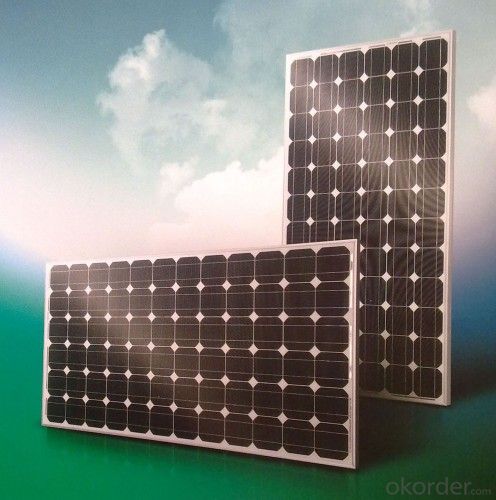
Data sheet
| Characteristics | |
| Max Power Voltage Vmp (V) | 17.4V |
| Max Power Current Imp (A) | 2.85A |
| Open Circuit Voltage Voc (V) | 22.4V |
| Short Circuit Current Isc (A) | 3.04A |
| Max Power Pm (W) | 50W |
| Temperature Coefficient of Cells | |
| NOCT | 47℃±2℃ |
| Temperature Coefficients of Isc (%/℃) | 0.06% |
| Temperature Coefficients of Voc (%/℃) | -0.32% |
| Temperature Coefficients of Pmp (%/℃) | -0.45% |
| Mechanical Data | |
| Type of Cells (mm) | Mono156×52 |
| Dimension | 700×510×30mm |
| Weight | 4.5kg |
| NO.of Cells and Connections | 3×12=36 |
| Limits | |
| Operating Temperature | –45°C to +80°C |
| Storage Temperature | –45°C to +80°C |
| Max System Voltage | 700V |
Process is as follows:
1, the battery test
2, positive Welding - Inspection –
3, on the back of cascading - Inspection –
4, laying (glass cleaning, material cutting, glass pre-processing, laying) –
5, laminating –
6, to flash ( to the side, cleaning) –
7, fitted border (glue, loading angle keys, punching, install box, scrub I glue) –
8, the welding junction box –
9, high-pressure test –
10, component testing -- -
11 appearance inspection, packaging and storage;
- Q: do solar panels create electricity from the ultraviolet light created from the sun? because they only have an efficientcy of like 8% and this scientist found out a way to collect the visible light also, and he says the solar panel could have an effeciency of up to 80%! so my question really is, do solar penels creat electricity from heat? do you know of anything that can?
- Not many people realise it, but Einstein did not win the Nobel Prize for either Theory of Relativity. He was awarded the prize for his work on the photoelectric effect. i.e. the ability of some materials to take photons of light and turn their energy into electricity. Now, since most of the Sun's UV rays are filtered out by the Earth's atmosphere, else we'd be able to get a sunburn in seconds walking around outside in daylight, I think there is some energy imparted to the solar cells by UV wavelengths of light, but most solar cell materials rely on the wavelengths of electromagnetic radiation we call visible. Plus, I always thought infrared wavelengths conveyed more heat energy than UV rays.
- Q: who has solar panels on their home and are they worth it
- There are different kinds of solar panels. The biggest division is between photovoltaic panels that produce electricity and thermal solar panels that produce heat for hot water and space heating. Commercial photovoltaic panels are from 8 to 24% efficient while solar thermal panels are from 60 to 80% efficient. Solar thermal panels especially for hot water have a much higher ROI (return on investment) than photovoltaic panels. A solar hot water system may have a payback period (when savings equal the investment) as short as 3 to 5 years while photovoltaic panels will typically have a payback period between 7 and 5 years. Solar panels especially in times of low interest rates may be a very worthwhile investment with a better return than you can find almost anywhere else. But they are also highly dependent upon your situation. Owning a home with a good southern exposure is a prerequisite.
- Q: What about sources for straight forward solar powered products? Excluding toys, garden frogs and outdoorpath lights I have found few useful items for the home. What I have found are solar panels for under $00 each, inverters, rechargeable indoor lights and a few camping/RV products that are interesting. It seems to me that these could help me start to wean the family off the power company. I can't afford to go cold turkey and cover my roof with solar panels and I don't think the HOA would allow me to even if I could. Is anyone using solar on a small scale?
- I have an active solar heater on my roof. During the winter it comes in handy and heats the house, though we still need to use a gas heater to get the temperature up to a comfortable level.
- Q: Solar panel packages have different levels of power. For instance you can get a kw system but is this kw per hour or day. How does this work?
- kW is the unit of measurement used. kWh means you have kW steady for an entire hour. In the case of solar panels, say you are using 00W panels. That means at any given time assuming ample sunlight is hitting the panel, it is producing 00W. You wanted a kW so you will need ten panels at 00W (less or more depending on the rating of the panel) this will give you kW. That means at any given time you can get as many watts as needed up to kW (000W). Say the sun hits the panels for eight hours a day, you will have kWh each of those eight hours, or 8kWh per day. Unless you have a system of batteries to capture unused power, you will only be able to use up to kW (000W) at any given time, any unused power will be wasted. Solar panels alone are not like a generator, they do not slow down or speed up depending on demand. Even with no load on them, they will produce as much power as they are able, and without batteries that power is lost. To simply answer your question, if you get a kW system, that means kW per hour.
- Q: I'm a student trying to design a mounting structure for solar panels. I'm reading about passive trackers so as to track the sun for optimal energy production; but I am not fully quot;seeinghow it works. Can someone please help explain it to me, or at least send me a link(s) that could help explain it well?THANKS IN ADVANCED!! [and HAPPY HALLOWEEN!!]
- It appears to be relying upon a phase change of liquid to gas to liquid to balance the system and return it to the east in the morning.
- Q: Can solar panels be installed on a university campus or educational facility?
- Yes, solar panels can be installed on a university campus or educational facility. In fact, many universities and educational institutions have already embraced solar energy as a sustainable and cost-effective solution for their energy needs. Installing solar panels not only reduces the environmental impact of the facility but also provides an opportunity for hands-on learning and research in renewable energy for students and faculty. Additionally, it can help save on energy costs and provide a reliable source of clean energy for the campus.
- Q: Can solar panels be installed on a building with historical significance?
- Yes, solar panels can be installed on a building with historical significance. However, it is important to consider the preservation of the building's architectural integrity. Careful planning and design are necessary to ensure that the installation of solar panels does not compromise the historical value of the building.
- Q: Can solar panels be installed on research facilities or laboratories?
- Yes, solar panels can be installed on research facilities or laboratories. In fact, many research facilities and laboratories have started to adopt solar energy to reduce their carbon footprint and dependence on traditional energy sources. Solar panels can be installed on rooftops or open spaces adjacent to the facility, providing clean and sustainable energy to power various equipment and operations. Additionally, the installation of solar panels on research facilities can serve as a demonstration of renewable energy technologies and encourage further adoption within the scientific community.
- Q: Is this a good kit for building a solar panel?
- Guide okorder /
- Q: Dose a solar panel need the entire range or spectrum of sunlight to produce power?
- It's a huge field of study, very important to solar cell development. People are trying to optimize spectral response for sunlight, even for sunlight in specific places. Google solar cell spectral response for many many websites. Most of them are specific to one experiment.
Send your message to us
CNBM Solar Monocrystalline 156 Series (50W) Solar Panels for Schools
- Loading Port:
- China main port
- Payment Terms:
- TT OR LC
- Min Order Qty:
- 100000 watt
- Supply Capability:
- 10000000 watt/month
OKorder Service Pledge
OKorder Financial Service
Similar products
Hot products
Hot Searches
Related keywords
